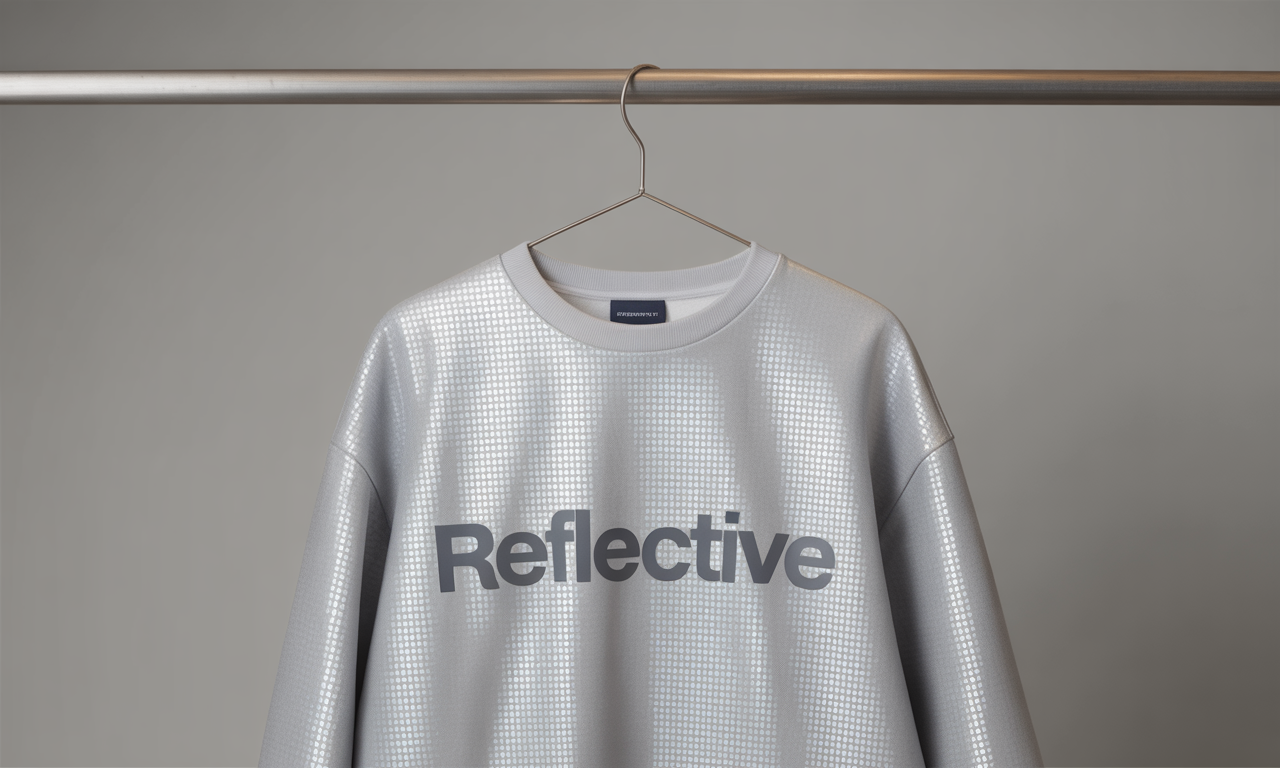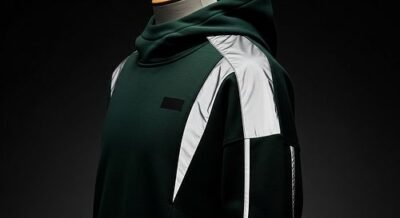Reflective Sweatshirt: Stay Seen and Secure This Season: The Ultimate Buyer’s Guide to Reflective Sweatshirt Workwear Clothing for June 2025.
 In an era where personal safety is paramount, the significance of high-visibility clothing, especially in professional and recreational settings, cannot be overstated. As the days grow shorter and the nights longer, or for those who work in low-light conditions, being easily seen is not just a matter of compliance but a critical component of personal security. Among the diverse range of high-visibility gear, the reflective sweatshirt stands out as a versatile, comfortable, and highly effective option.
In an era where personal safety is paramount, the significance of high-visibility clothing, especially in professional and recreational settings, cannot be overstated. As the days grow shorter and the nights longer, or for those who work in low-light conditions, being easily seen is not just a matter of compliance but a critical component of personal security. Among the diverse range of high-visibility gear, the reflective sweatshirt stands out as a versatile, comfortable, and highly effective option.
The Undeniable Importance of High-Visibility
High-visibility clothing, often referred to as “hi-vis,” is a form of personal protective equipment (PPE) designed to make the wearer easily discernible from any background. The science behind it is a combination of fluorescent materials for daytime visibility and retroreflective materials for nighttime. The human eye responds best to bright, fluorescent colors like lime green, yellow, and orange, making them ideal for daytime use. After dark, retroreflective tapes or patches bounce light back to its source, such as a vehicle’s headlights, making the wearer appear glowing and instantly recognizable.
The demand for high-visibility workwear has seen a steady increase, and for a good reason. According to the Occupational Safety and Health Administration (OSHA), approximately 70% of all nighttime highway construction fatalities are workers on foot. These sobering statistics underscore the life-saving potential of hi-vis garments. But the need extends beyond construction sites. Warehouse workers, road crews, emergency responders, and even recreational joggers and cyclists can significantly enhance their safety by donning reflective apparel.
In June 2025, the standards for high-visibility safety apparel, such as the ANSI/ISEA 107-2020, continue to be the benchmark for quality and performance. These standards classify garments into different types and classes based on the amount of fluorescent and reflective material used, ensuring that there is a suitable option for every level of risk.
Anatomy of a Reflective Sweatshirt: More Than Just a Shiny Piece of Clothing
A reflective sweatshirt is a marvel of material science and thoughtful design. To make an informed purchase, it’s essential to understand its core components:
The Fabric: A Blend of Comfort and Durability
Modern reflective sweatshirts are a far cry from the stiff, uncomfortable safety vests of the past. Today’s options are crafted from a variety of materials, each offering a unique set of benefits:
- Polyester Fleece: This is the most common material for a reason. It’s lightweight, breathable, moisture-wicking, and provides excellent insulation. The soft, brushed interior of a fleece sweatshirt offers exceptional comfort for all-day wear.
- Cotton Blends: For those who prefer the feel of natural fibers, cotton-polyester blends provide a good balance of comfort, durability, and moisture management. The cotton offers a soft hand-feel, while the polyester enhances the garment’s longevity and color retention.
- Bird’s Eye Knit: This type of fabric is characterized by its small, diamond-shaped pattern, which promotes airflow and wicks moisture away from the skin. It’s an excellent choice for warmer climates or for individuals who are highly active.
- Moisture-Wicking Technology: Many high-performance reflective sweatshirts incorporate advanced moisture-wicking technologies. These fabrics pull sweat away from the body to the surface of the garment, where it can evaporate, keeping the wearer dry and comfortable.

The Reflective Material: The Heart of Visibility
The reflective elements of a sweatshirt are what make it a true piece of safety equipment. There are two primary types of reflective materials used:
- Glass Bead Technology: This is the most common and cost-effective type of reflective material. It consists of microscopic glass beads coated with a reflective agent. When light strikes these beads, it’s reflected directly back to the source.
- Prismatic Technology: This technology uses a series of micro-prisms to reflect light. It’s more efficient and durable than glass bead technology, providing a brighter reflection over a wider range of angles. Prismatic tape is often used in high-performance garments where maximum visibility is crucial.
The placement of the reflective tape is also a critical factor. The ANSI/ISEA 107 standard dictates specific patterns for reflective tape to ensure 360-degree visibility. This typically includes horizontal stripes around the torso and sleeves, and vertical stripes over the shoulders.
Key Features to Look for in Your June 2025 Reflective Sweatshirt
With a plethora of options on the market, it can be challenging to choose the right reflective sweatshirt. Here are the key features to consider in June 2025:
- ANSI/ISEA 107-2020 Compliance: This is the most important feature to look for. The ANSI/ISEA 107 standard is the American National Standard for High-Visibility Safety Apparel and Accessories. It classifies garments into three classes based on the amount of visible background material and retroreflective material.
- Class 1: For workers in low-risk environments, such as parking lot attendants.
- Class 2: For workers in environments with a higher risk, such as road construction crews.
- Class 3: For workers in the highest-risk environments, such as highway flaggers. This class offers the highest level of visibility.
- Comfort and Fit: A sweatshirt that is too tight or too loose can be a distraction and a safety hazard. Look for sweatshirts with a comfortable, athletic fit that allows for a full range of motion. Features like ribbed cuffs and waistbands help to keep the sweatshirt in place and prevent drafts.
- Pockets and Storage: Functionality is key, especially for workwear. Look for sweatshirts with ample pocket space, including zippered pockets to keep your belongings secure. Some sweatshirts even feature specialized pockets for pens, phones, and other tools.
- Durability and Construction: A well-made reflective sweatshirt will last for many seasons. Look for features like reinforced seams, durable zippers, and high-quality fabric that can withstand the rigors of daily wear and tear.
- Weather Resistance: For those who work in inclement weather, a water-resistant or waterproof reflective sweatshirt is a must. These garments are treated with a durable water-repellent (DWR) finish that causes water to bead up and roll off the surface.
- Breathability: In warmer weather or during strenuous activity, breathability is crucial for comfort. Look for sweatshirts made from moisture-wicking fabrics and with features like underarm vents to promote airflow.
Choosing the Right Reflective Sweatshirt for Your Needs
The right reflective sweatshirt for you will depend on your specific needs and the environment in which you’ll be wearing it. Here’s a breakdown of how to choose the right one:

For the Professional:
- Construction Workers and Road Crews: You’ll need a Class 3 reflective sweatshirt for maximum visibility. Look for durable, water-resistant options with plenty of pockets.
- Warehouse and Factory Workers: A Class 2 sweatshirt is often sufficient. Prioritize comfort and breathability for all-day wear.
- Emergency Responders: You’ll require a Class 3 sweatshirt, and it’s worth investing in one with prismatic reflective tape for the brightest reflection.
For the Recreational User:
- Joggers and Cyclists: A Class 2 sweatshirt is a good choice for visibility on the road. Look for lightweight, moisture-wicking options with an athletic fit.
- Dog Walkers and Hikers: A Class 1 or 2 sweatshirt will provide ample visibility. Consider a fleece-lined option for warmth on chilly evenings.
Care and Maintenance: Keeping Your Reflective Sweatshirt in Top Condition
To ensure that your reflective sweatshirt maintains its high-visibility properties and lasts for as long as possible, proper care is essential. Here are some tips:
- Washing: Always follow the care instructions on the garment’s label. In general, it’s best to wash your reflective sweatshirt in cold water on a gentle cycle. Avoid using harsh detergents or bleach, as these can damage the reflective material.
- Drying: Tumble dry on a low heat setting or hang to dry. High heat can damage the reflective tape and cause the fabric to shrink.
- Storage: Store your reflective sweatshirt in a cool, dry place away from direct sunlight. Prolonged exposure to UV rays can cause the fluorescent colors to fade.
- Inspection: Regularly inspect your sweatshirt for signs of wear and tear. If the reflective tape is cracked, peeling, or has lost its reflectivity, it’s time to replace the garment.
Conclusion: A Bright and Secure Future
The reflective sweatshirt is more than just a piece of clothing; it’s a vital piece of safety equipment that can significantly reduce the risk of accidents and injuries. By understanding the key features to look for and choosing the right sweatshirt for your needs, you can ensure that you stay seen and secure, no matter the conditions. As we move through June 2025 and beyond, the technology and design of reflective sweatshirts will continue to evolve, offering even greater levels of comfort, style, and, most importantly, safety.
Frequently Asked Questions (FAQs)
1. What is the difference between a Class 2 and Class 3 reflective sweatshirt?
The main difference between a Class 2 and Class 3 reflective sweatshirt lies in the amount of high-visibility background material and retroreflective material. A Class 3 sweatshirt has more of both, offering a higher level of visibility from a greater distance and in a wider range of conditions. Class 3 garments are required for workers in the highest-risk environments, such as those working on highways or in other high-traffic areas.
2. Can I wear a reflective sweatshirt for recreational activities like running or cycling?
Absolutely! A reflective sweatshirt is an excellent choice for recreational activities that take place in low-light conditions. It provides a much higher level of visibility than standard athletic wear, making you more easily seen by motorists and other pedestrians. Look for a lightweight, moisture-wicking sweatshirt with an athletic fit for maximum comfort during your workout.
3. How often should I replace my reflective sweatshirt?
The lifespan of a reflective sweatshirt depends on several factors, including the frequency of use, the quality of the materials, and how well it’s cared for. As a general rule, you should inspect your sweatshirt regularly for signs of wear and tear. If the reflective tape is cracked, peeling, or has lost its reflectivity, or if the fluorescent background material is faded or soiled, it’s time to replace the garment. For workwear that is worn daily, it’s a good practice to replace it every six months to a year.
4. Are there reflective sweatshirts designed for women?
Yes, many manufacturers now offer reflective sweatshirts specifically designed for women. These sweatshirts are tailored to fit a woman’s body, providing a more comfortable and flattering fit than a standard men’s or unisex sweatshirt. They offer all the same safety features and compliance with ANSI/ISEA standards as their male counterparts.
5. Can I get a reflective sweatshirt in a color other than yellow or orange?
While fluorescent yellow-green and orange are the most common colors for high-visibility clothing due to their high contrast against most backgrounds, some manufacturers offer other colors, such as red or pink. However, it’s important to note that these alternative colors may not be compliant with ANSI/ISEA 107 standards for all classes. If you require a compliant garment for work, it’s best to stick to the approved colors. For recreational use, other colors can still provide a good level of visibility.

